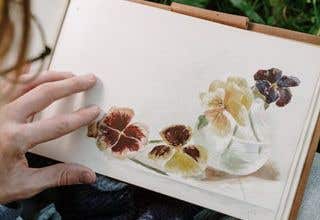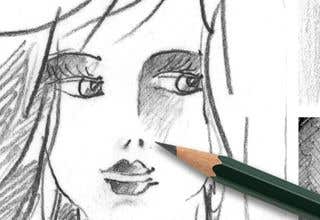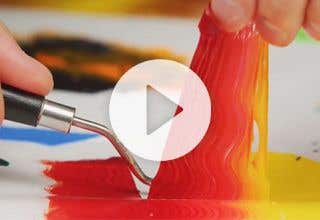Acrylic painting has become increasingly popular among novice artists due to its versatility, affordability, and fast-drying qualities. It is an ideal choice for those just starting out in the creative arts, providing a range of unique features that can help beginners explore their artistic potential. They come in various thicknesses, allowing you to achieve different textures and effects. Additionally, acrylic paint is water-soluble when wet and dries to a durable, opaque finish quickly. With these qualities and more, acrylic painting is an ideal choice for anyone wanting to start out with painting. This article will explore the reasons behind the popularity of acrylic paints among beginner artists, as well as the advantages they offer compared to other mediums.
Getting Started with Acrylic Painting
Acrylic painting is an incredibly versatile medium that is perfect for all skill levels. With its speedy drying time and unique ability to create a multitude of effects, it's no wonder why so many artists choose this medium. If you're ready to dive into the world of acrylic painting, we've got you covered. In this article, we'll give you an overview of everything you'll need to know, including supplies, workspace setup, and some pro tips to help you achieve your artistic goals. So grab your paintbrushes and get ready to create a masterpiece!
What is Acrylic Paint?
Acrylic paint is a water-based medium made from a mixture of pigments and acrylic polymer emulsion. It can be used on a variety of surfaces, including canvas, paper, wood, and more. Acrylic paint dries quickly, which makes it ideal for layering and creating a range of effects.
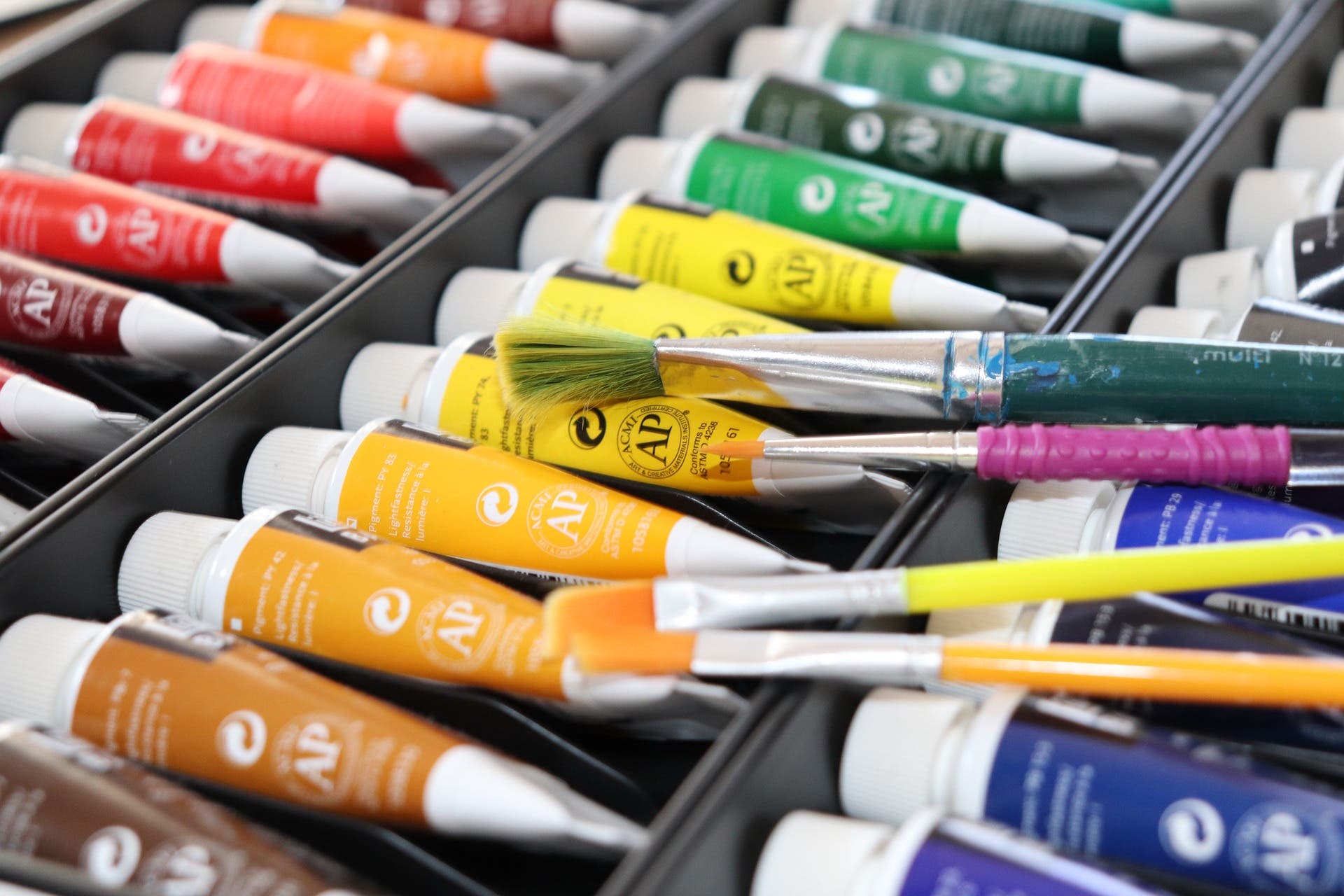
Advantages of Acrylic Paint
Acrylic paint has several advantages over other painting mediums, including:
- Fast drying time: Acrylic paint dries quickly, which allows artists to build up layers of paint without having to wait for long periods of time.
- Water-soluble: Acrylic paint is water-soluble, which means that it can be thinned with water to create a range of effects, from transparent washes to opaque layers.
- Versatility: Acrylic paint can be used on a variety of surfaces, including canvas, paper, wood, and more.
- Durability: Acrylic paint is durable and resistant to fading, cracking, and yellowing over time.
Acrylic Painting Supplies
To get started with acrylic painting, you will need the following supplies:
- Acrylic paint: You will need a selection of acrylic paint colours. Choose colours that you like and that suits your painting style.
- Brushes: You will need a variety of brushes in different sizes and shapes to create different effects. Choose brushes with synthetic bristles that are specifically designed for acrylic paint.
- Canvas or paper: Choose a surface to paint on, such as canvas or paper. Canvas is more durable and can be stretched over a wooden frame, while the paper is less expensive and can be used for studies or sketches.
- Palette: You will need a palette to mix your paint on. A plastic or ceramic palette works well, or you can use a piece of glass or a smooth plastic surface.
- Water container: You will need a container of water to rinse your brushes and thin your paint.
- Easel: An easel will hold your canvas or paper in place while you paint and can be adjusted to different angles.
Setting Up Your Workspace
When setting up your workspace for acrylic painting, consider the following tips:
- Choose a well-lit area: Choose an area with plenty of natural light or good artificial lighting so you can see your colours and work comfortably.
- Cover your work surface: Cover your work surface with a drop cloth or newspaper to protect it from paint spills and splatters.
- Organise your supplies: Organise your supplies so that they are easily accessible and within reach while you paint.
- Wear protective clothing: Wear old clothes or an apron to protect your clothing from paint stains.
- Consider ventilation: Acrylic paint can produce fumes, so consider working in a well-ventilated area or using a fan to circulate air.
In conclusion, acrylic painting is a versatile and popular medium among artists of all skill levels. With the right supplies and workspace, you can start creating beautiful works of art with acrylic paint. Remember to choose high-quality supplies, set up a comfortable workspace, and experiment with different techniques to find what works best for you.

Basic Acrylic Painting Techniques
Acrylic painting is a great medium for experimentation and can produce beautiful works of art. Whether you’re a beginner or an experienced artist, there are certain techniques that you should know in order to make the most of your acrylics. Here’s a guide to some of the basics that will help get you started.
Brush Techniques
Selecting the perfect brush for your painting is an indispensable aspect of creating a masterpiece. As a beginner, it may be tempting to grab the largest flat brush available, but beware! This may not be the best approach for the level of detail or control you're looking to achieve in your artwork. Instead, consider opting for a medium-sized round brush. This versatile brush, available in varying sizes from #3 to #12, is perfect for everyday use. However, if you're aiming for a particular effect in your painting, don't hesitate to explore other options. And don't forget about the cost-efficient synthetic brushes that can blend your colours to perfection while giving you more bang for your buck. Choose your brush wisely, and your painting will thank you.
Mixing Colours
Creating stunning and dynamic artwork comes down to one thing - colour mixing. With acrylic paint, blending colours together is a breeze, and you can achieve vibrant and eye-catching results effortlessly. To start, choose two or three compatible colours and add more slowly until you achieve the perfect shade. Remember, work quickly, as acrylic paint dries fast. Watch out for applying too much pressure to your brush or palette knife, as this can lead to a muddy mix. But don't forget about liquid media - gloss medium and glazing liquid can help give your artwork extra depth and longevity, making sure your masterpiece remains looking fresh for years to come. So, let your creativity soar, and mix colours with ease using acrylic paints!
Layering Paint
This is another technique that can add dimension and definition to paintings; start off with only two layers, then continue building up until satisfied with the results (just remember that each layer needs time between them in order to set properly). When layering, consider adding texture—this can be done by pressing materials like cheesecloth or tissue paper into wet paint. - Experiment with different items until you find something that gives the desired effect! Lastly, soft brushes are best when layering colours due to their ability to create smooth transitions between hues.
Blending Paint
Achieve flawless transitions between shades with the art of blending. By incorporating circular or figure eight motions, you can prevent streaky edges and create a naturalistic gradation that layering alone cannot accomplish. For the best results, use synthetic brushes to avoid picking up too much pigment, but feel free to experiment to find what technique suits you best. Don't be afraid to blend multiple colours together for a unique marbling effect. Remember, the key is not to apply too much pressure, or your masterpiece may become muddy once again. Keep your tools clean and covered in colour for a seamless painting experience.
Advanced Acrylic Painting Techniques
Acrylic painting is versatile and allows artists to create multidimensional works of art. Advanced techniques, such as dry brushing, layering, glazing, palette knife and impasto effects, add depth and complexity. Texture can be added with mediums like gels, pastes, fibres or collages. Understanding colour theory is crucial in creating dynamic and harmonious paintings. Mastering these techniques allows artists to evoke emotions, tell stories and pique curiosity in their viewers.
Glazing
Glazing is a technique where one or several layers of transparent acrylic paint are applied on top of an existing layer; this helps to create a smooth and even finish as well as adding an extra bit of depth and complexity. To do this, thin down your acrylic paint with water or glazing liquid (which comes in various sheens), then apply in thin coats either with a brush or airbrush – for extra texture, use a sponge for application instead. Allow 10 minutes between each coat so that the paint has time to dry before applying new ones, and make sure the surface is free from dust or fingerprints first!
Impasto
Impasto involves building up heavy textures using palette knives, which creates unique brush strokes that really stand out due to their three-dimensional nature. Start by selecting appropriate colours and mixing them onto your palette, then take two brushes (one blunt and one pointed) in either hand and start moving them around your canvas while paying attention to light direction - this will help emphasise shadows and bring depth to the image itself. Have fun with it too: Experiment with unusual shapes, lines, and patterns rather than just blending colours together; ultimately, choose whatever looks best!
Sgraffito
Discover the fascinating world of Sgraffito, an Italian technique that adds incredible depth and texture to your paintings. With meticulous precision, artists scratch away at already-dried layers of paint to reveal bold, contrasting outlines that bring life to feathers, fur, and branches. To achieve this stunning effect, start by layering dark colours and waiting patiently for them to dry, before carefully revealing lighter hues with a sharp tool - like the back end of your brush. The results are breathtaking and offer a dynamic interplay of colours that truly elevate your art. Remember, patience is key, as layers need time to dry, so take your time and let each masterpiece reveal itself in its own time.
Pouring
With acrylic pouring, pigments are mixed together directly on the canvas without any prior mixing on the palette; different colours are poured onto different sections slowly while allowing gravity to move them freely - this allows interesting effects such as cells," (where round pools are created due to different densities), which really make the artwork stand out! Be aware, though, that pouring may require some trial and error at first; also consider taping or surrounding certain areas so that they don’t get covered up by accident! Additionally, remember not to over-mix, as it could ruin perspectives and leave nothing but mud behind.
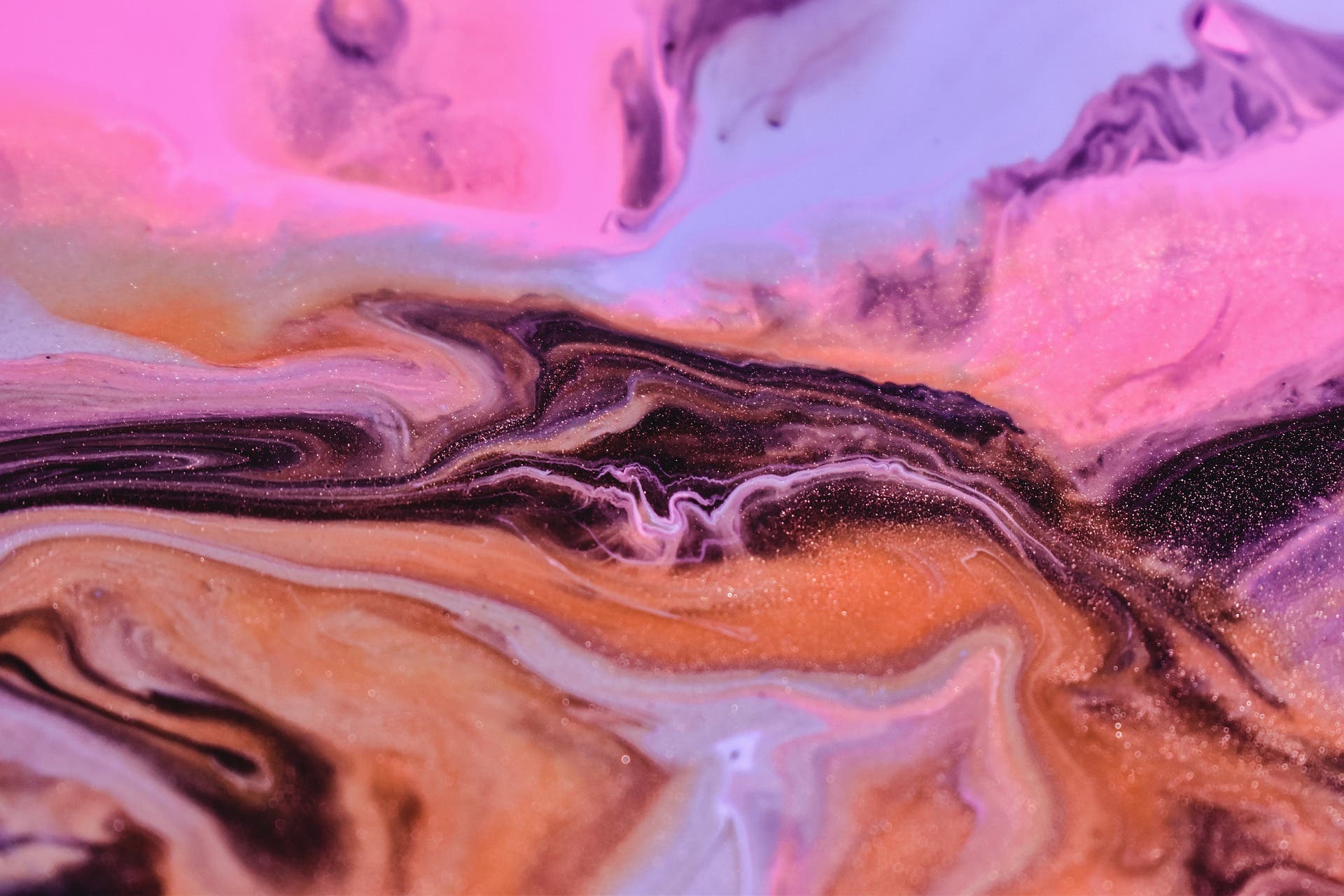
Troubleshooting
Common acrylic painting problems and how to solve them:
Acrylic painting is a versatile and popular medium among artists of all skill levels. However, even experienced artists may encounter problems while working with acrylic paint. In this article, we will discuss some common acrylic painting problems and how to solve them. We'll also provide tips for avoiding mistakes to help you achieve the best possible results with your acrylic paintings.
Problem: Paint Drying Too Quickly
One of the benefits of acrylic paint is its fast drying time, but this can also be a problem for some artists. If your paint is drying too quickly, you may find it difficult to blend colours or create smooth transitions.
Solution: Use an Acrylic Medium
Adding an acrylic medium to your paint can slow down the drying time and make it easier to work with. A medium can also improve the flow of your paint and help it spread evenly on the canvas.
Problem: Paint Not Adhering to the Canvas
If your paint is not sticking to the canvas, it may be due to poor surface preparation or the wrong type of canvas.
Solution: Prep the Surface and Use the Right Canvas
Before painting, make sure the canvas is clean and free of dust or debris. Prime the canvas with gesso or another appropriate primer to create a smooth, absorbent surface for the paint. Additionally, make sure you're using the right type of canvas for acrylics - avoid using oil painting canvases, as they may not absorb the paint properly.
Problem: Paint Cracking or Flaking
Acrylic paint can crack or flake off the canvas if it's applied too thickly or on an inflexible surface.
Solution: Use Thin Layers and a Flexible Surface
To prevent cracking or flaking, apply thin layers of paint and allow each layer to dry completely before adding another. You can also use a flexible surface like canvas or paper that can withstand the expansion and contraction of the paint as it dries.
Problem: Colour Changes When Dry
Acrylic paint can dry slightly darker or lighter than it appears when wet, which can be frustrating for artists trying to achieve a specific colour.
Solution: Test Colours Before Painting
To avoid surprises, it's a good idea to test your colours on a scrap of paper or canvas before applying them to your painting. This will give you an idea of how the colour will look when dry, and you can adjust your palette accordingly.
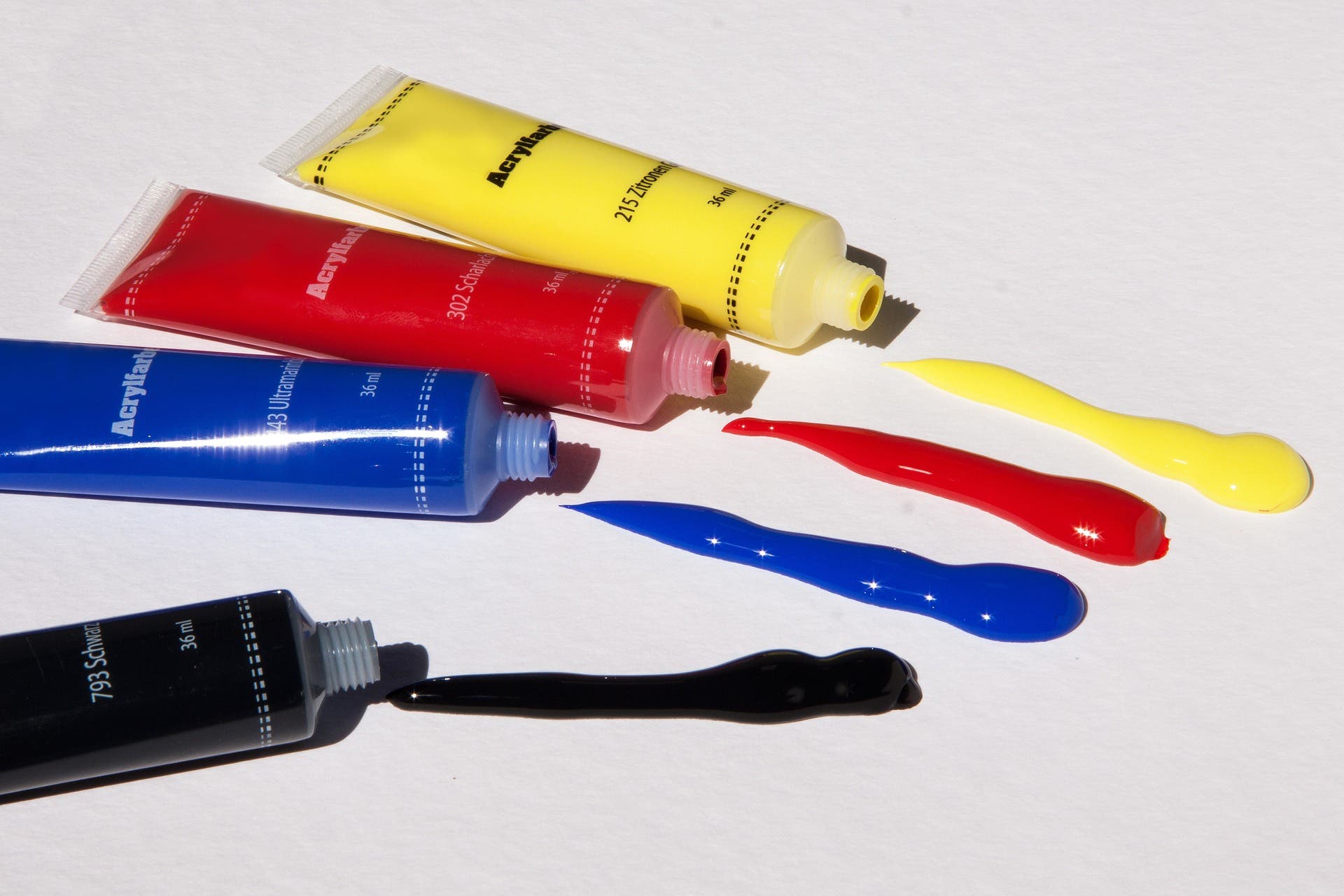
Tips for Avoiding Mistakes
- Plan your painting ahead of time and make sure you have all the necessary supplies.
- Work in a well-ventilated area and wear protective clothing to avoid getting paint on your skin or clothes.
- Start with simple projects and techniques before moving on to more complex ones.
- Take breaks as needed to avoid fatigue and frustration.
- Experiment with different acrylic painting techniques to find what works best for you.
Acrylic painting problems can be frustrating, but they're not insurmountable. By using the right techniques and supplies, you can solve common problems and create beautiful works of art. Remember to take your time, be patient, and enjoy the process of painting.
Conclusion
In conclusion, we've covered some common problems that beginners may encounter while working with acrylic paint and provided solutions to help you overcome them. We've also offered some tips for avoiding mistakes and achieving the best possible results with your acrylic paintings. Remember that mastering acrylic painting techniques takes time and practice, but don't get discouraged. Keep experimenting with different techniques and continue to develop your skills. With patience and dedication, you'll be able to create beautiful works of art that you can be proud of.








